Mudra in a Supporting Role
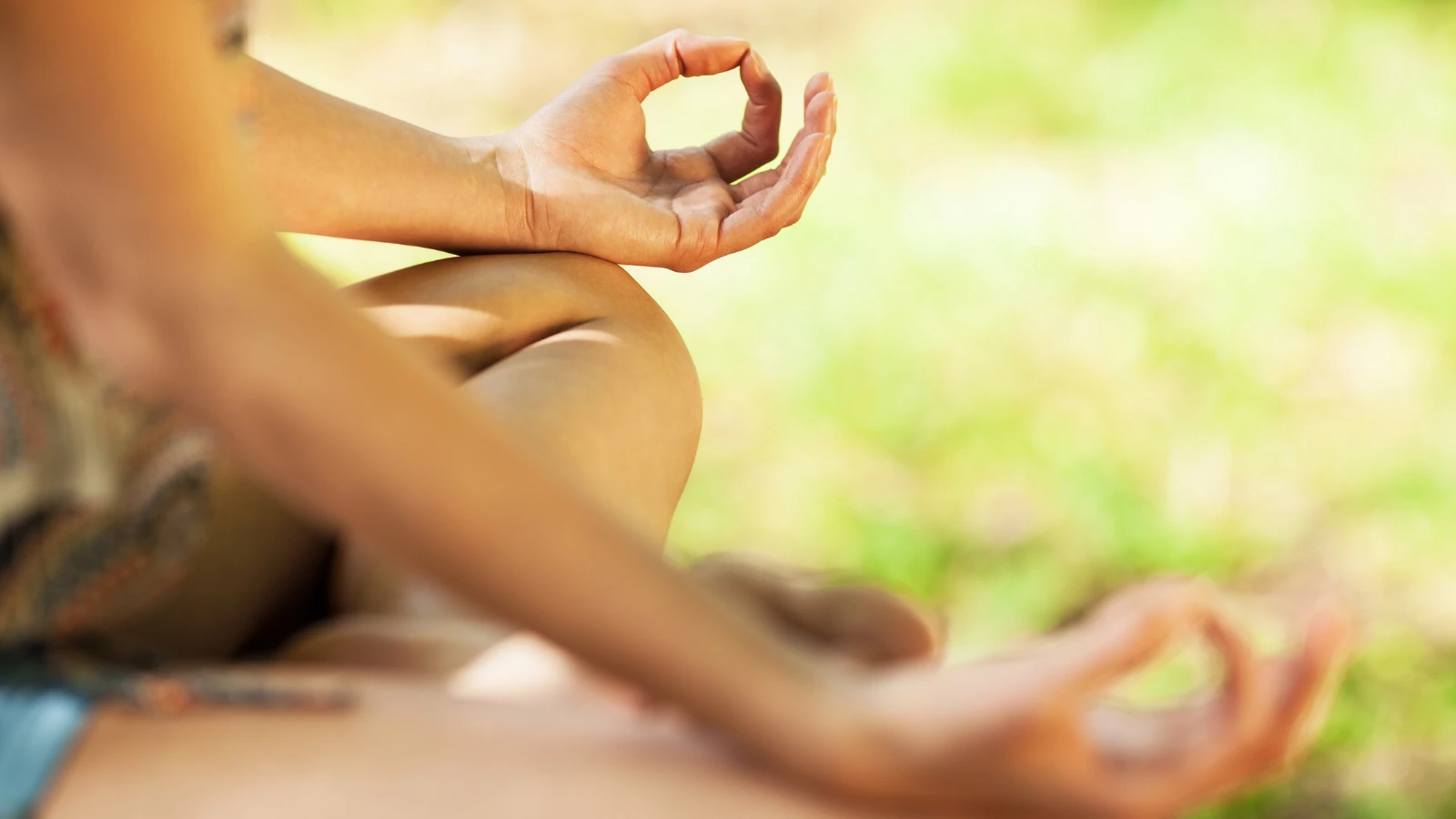
A few weeks ago, we discussed how you can organize an entire practice around a mudra, if you give your mudra a leading role in your yoga practice. A mudra can also play a supportive role to help unfold the theme of the practice and support some other main elements of your choice. (Remember, in more complex practices it is better to have just one dominant element.) A well-selected mudra can help manifest your intention for the practice on the physical, energetic or mental level.
Physical Level: Yoga Asana and Mudra
When you work with the body on the physical level, asana usually becomes the primary element of the practice with other elements playing supporting roles. When you choose to work with physical aches and pains, like back or neck pain, hip tension, and the like, you can always complete your practice with a mudra that specifically addresses that ailment. Back Mudra, for example, is meant to relieve tension in your lower back, or Maha Sacral Mudra is supposed to help with pain in the lower abdomen.
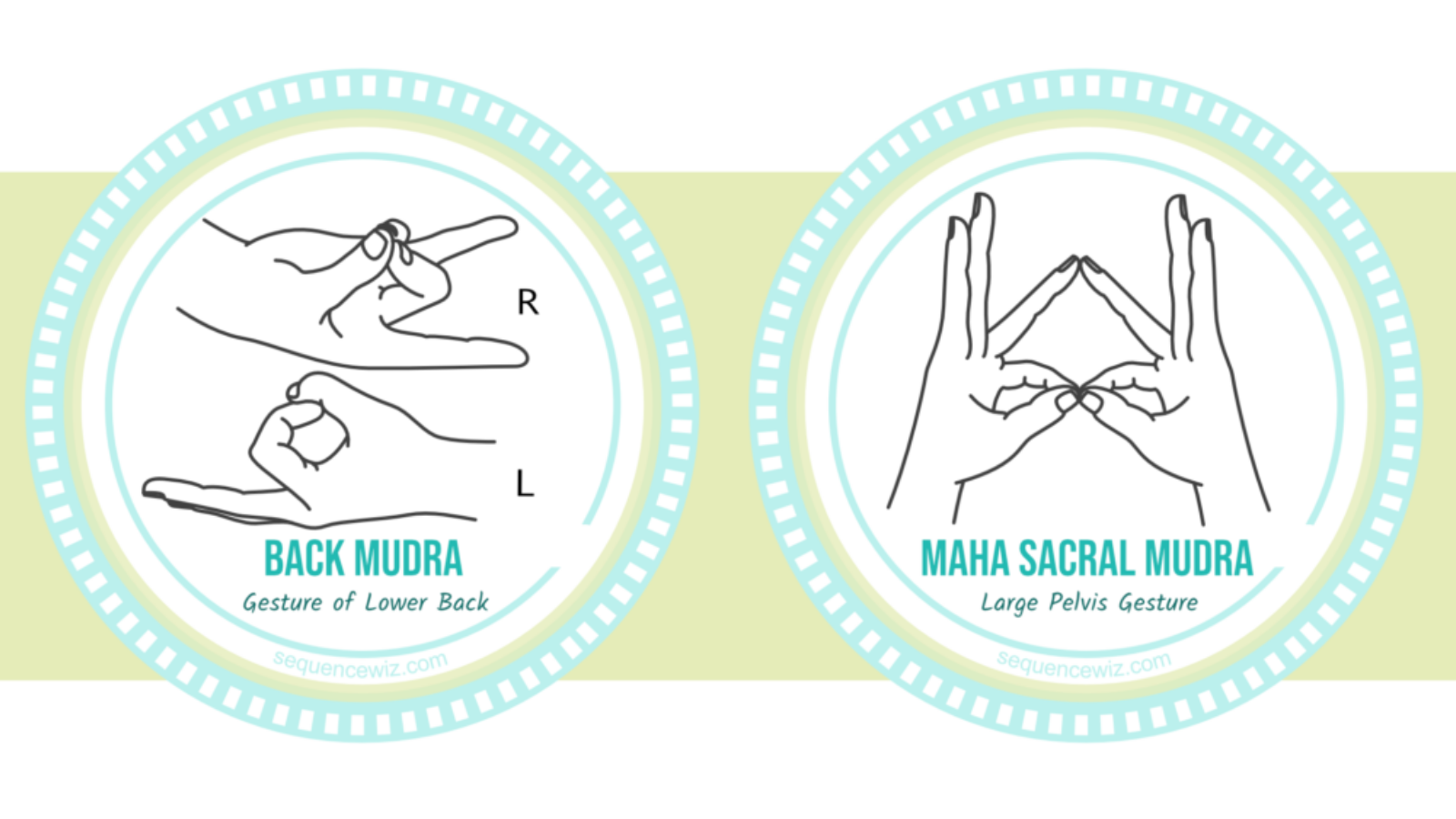
Many mudras don’t target individual body parts directly but can still be very useful in working with the physical dimension indirectly. For example, there is no mudra that I know of specifically for your hip flexors.
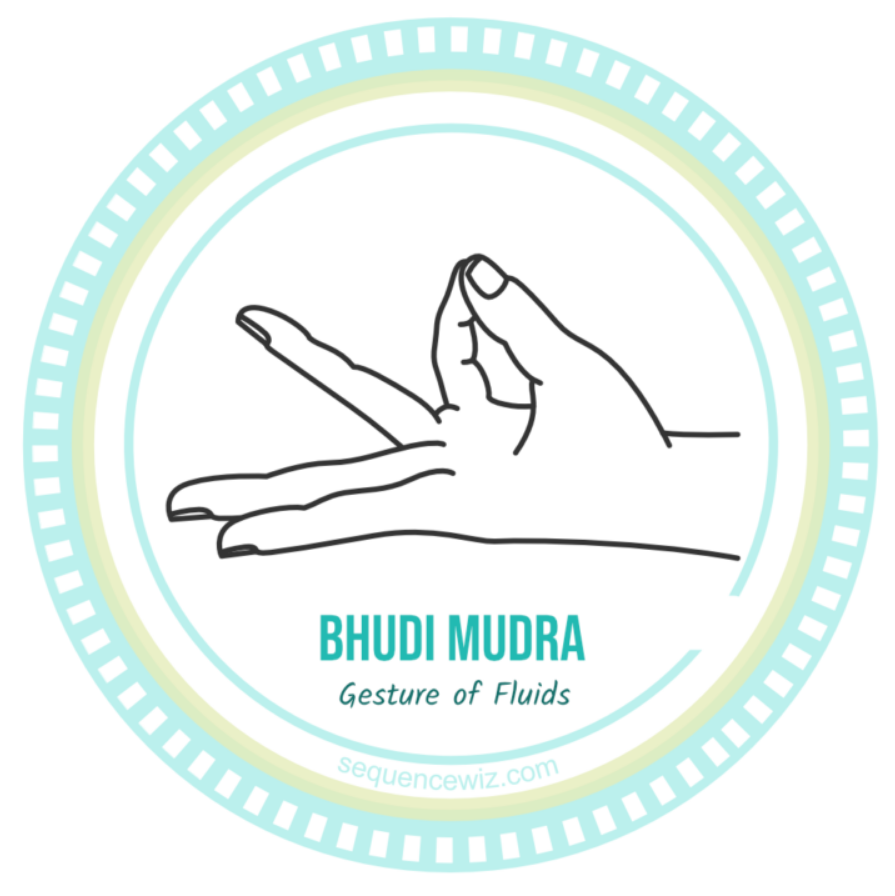 But you can design an entire practice around releasing tension in your hip flexors and then during meditation instruct your students to imagine that their pelvic bowl is full of water to facilitate the sense of muscular pliability and nourishment. You can hold Bhudi mudra (Gesture of Fluids) during meditation to enhance that sense of fluidity and pliability.
But you can design an entire practice around releasing tension in your hip flexors and then during meditation instruct your students to imagine that their pelvic bowl is full of water to facilitate the sense of muscular pliability and nourishment. You can hold Bhudi mudra (Gesture of Fluids) during meditation to enhance that sense of fluidity and pliability.
Or, instead of looking for a specific mudra for upper back tension, for example, you might use Garuda (Eagle) Mudra during meditation and imagine spreading your wings and expanding your upper back. In fact, most mudras have symbolic, rather than literal, names and meanings, and we can evoke that symbolism in different ways to support our intention for the practice.
Physiological/Energetic Level: Pranayama and Mudra
When you are working with the energetic or physiological dimension, breath awareness and/or pranayama usually become the dominant element(s). There are many mudras that address particular physiological issues (like circulatory, digestive and breathing challenges, headaches, allergies, and so on). There are even more mudras that work with our subtle energetic anatomy (vayus, chakras, nadis, elements, and so on).
Here we are trying to affect our energetic currents that are supposed to move in certain directions, be located in specific parts of the body, and perform certain functions. If we choose to work with energy mudras, it is important that we select yoga poses and breathing practices that do not contradict the energetic current of the mudra.
Mudras to Fit Your Practice
For example, if you spend an entire practice on expanding the chest and focusing on the heart chakra and then at the end add a mudra that guides Apana Vayu, which resides in the lower abdomen and moves the energy down and out, this might feel confusing to your students.
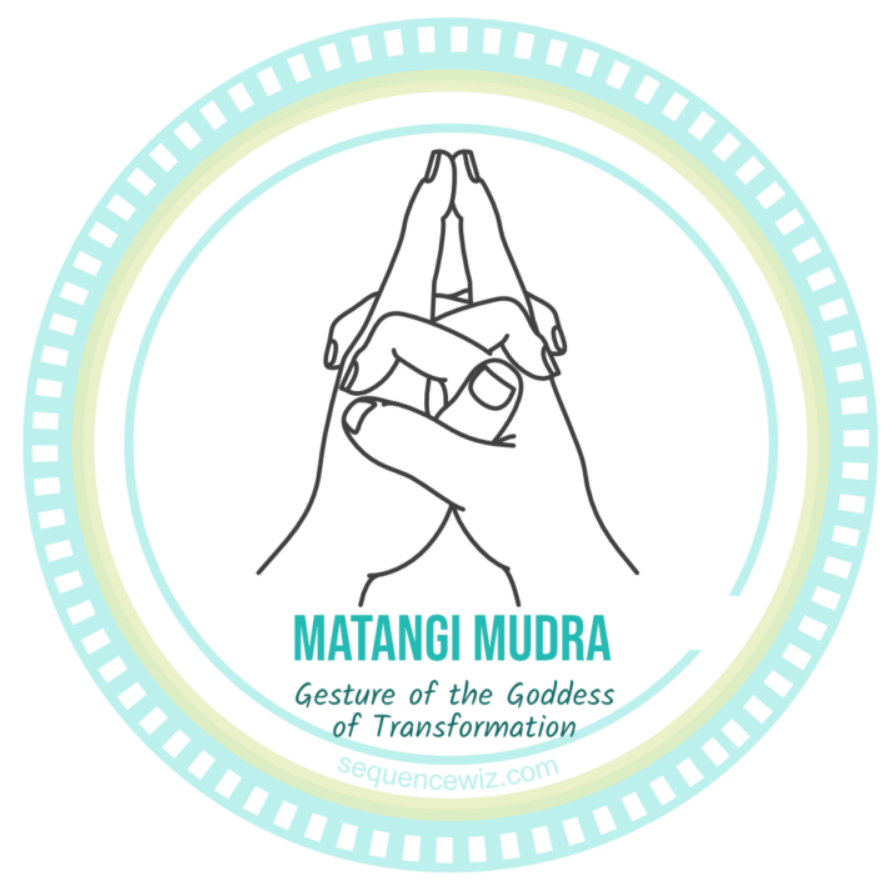 I also find that many mudras have rather pronounced energetic qualities and, even if they seem like they might fit with the theme of my practice in name, they might not fit well energetically.
I also find that many mudras have rather pronounced energetic qualities and, even if they seem like they might fit with the theme of my practice in name, they might not fit well energetically.
For example, let’s say I design a practice that is meant to aid digestion by the action of gentle hugging of the abdomen. I could try to end the practice with Matangi Mudra which is meant to activate Samana Vayu and help with digestion and assimilation. But when I try it myself, the gesture and the feeling it gives me doesn’t seem to align with my intention. The practice is calling for a gentle cradling of the abdomen or some other comforting gesture. That is why it is so important to experiment with different mudras yourself first before you teach them to your students to get a sense of their energetic qualities.
Mental/Psychological Level: Meditation and Mudra
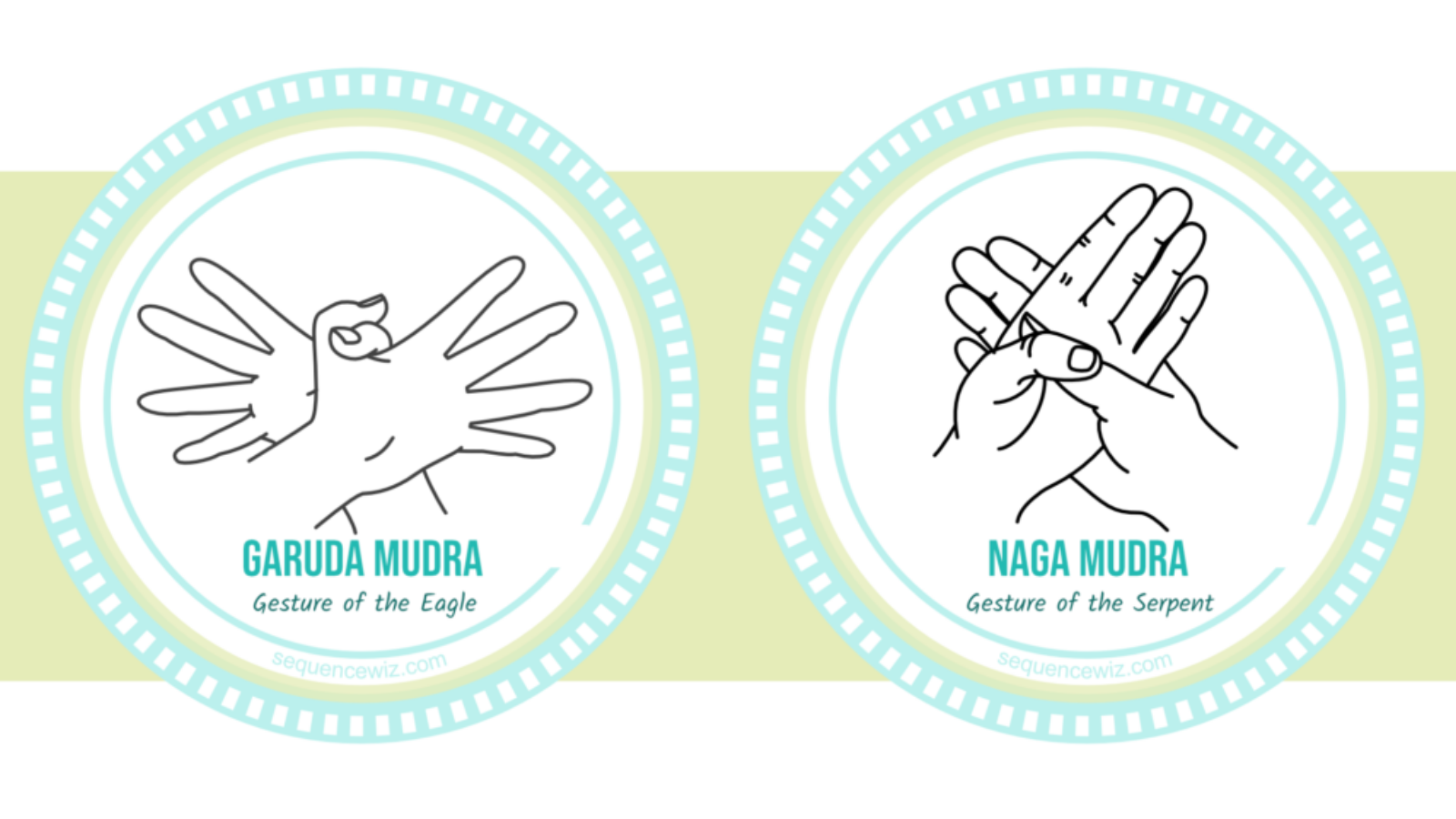
When we design a yoga practice that is meant to affect the state of mind, we usually choose chanting or meditation as the dominant element. Mudras can work really well to deepen the main topic of meditation and promote a particular state of mind. The key here, again, is not to send mixed messages and not to confuse our metaphors. If you are trying to help your students feel more grounded, it makes more sense to use Earth mudra rather than Wind mudra, and if you spend the entire practice encouraging them to soar like an Eagle, it might make more sense to do Garuda Mudra than Naga Mudra, which is a tribute to a Snake goddess.
There is also a group of mudras known collectively as spiritual mudras that can work well with most meditation themes. Jnana Mudra, Anjali Mudra, Dhyana Mudra, and others, promote the state of contemplation, centering, and inner focus. They can support most mental states you wish to cultivate.
How to Add Hand Gestures to Yoga Practice
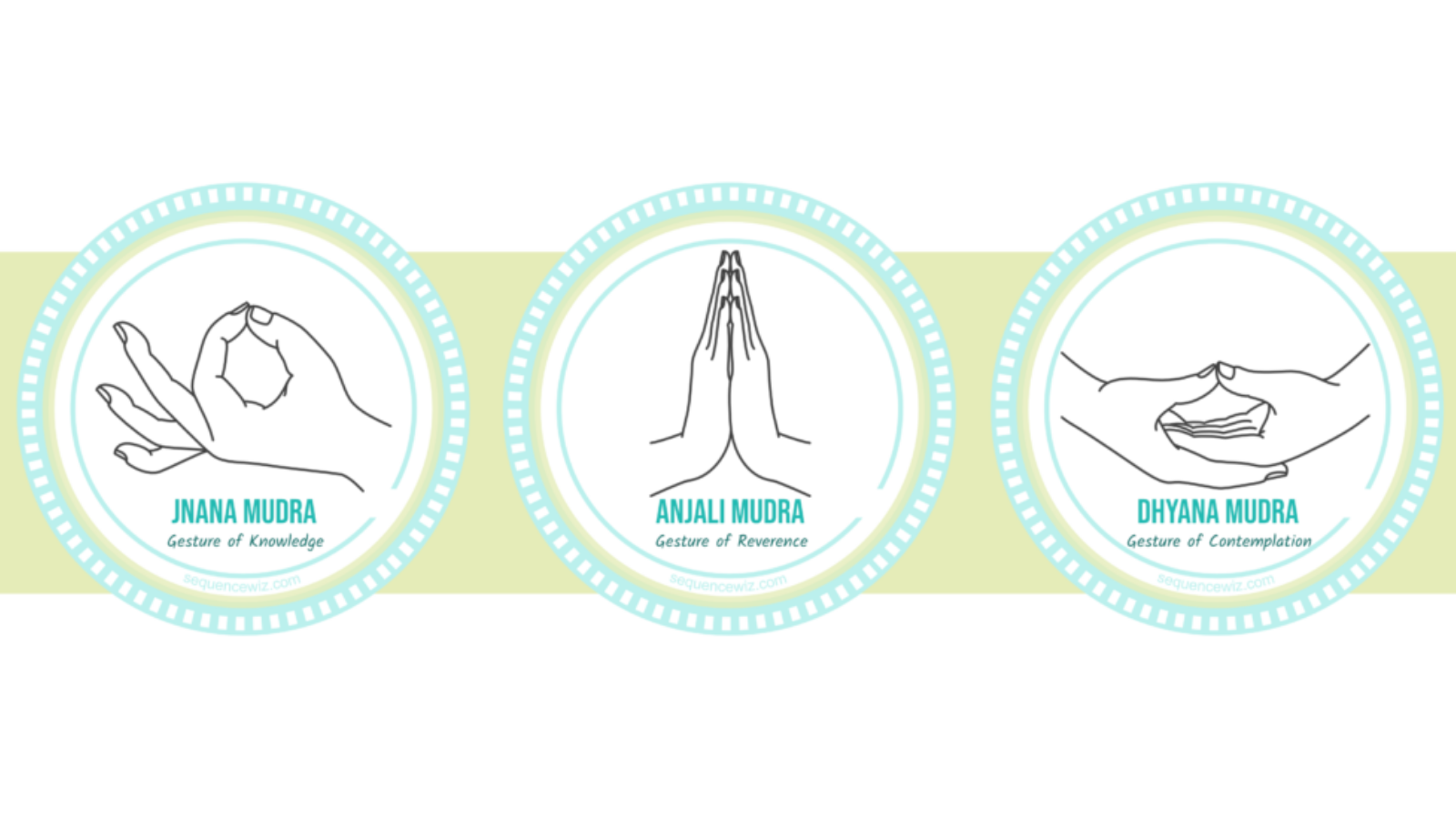
In the traditional yogic approach, we use asana to prepare for pranayama, and pranayama to prepare for meditation. That is why we usually do yoga poses first, then do seated breathing practices and then do seated meditation (there are exceptions, of course). It makes the most sense to do our mudras during meditation to optimize their effect, although we can also do some of them during Savasana. There are also times when we can do mudras throughout the practice. For example, we can use Anjali Mudra at different points of the practice to punctuate it with points of stillness and internal focus to pay attention to how the body responds to different parts of the practice.
When Does it Make Sense to Practice Yoga Mudras?
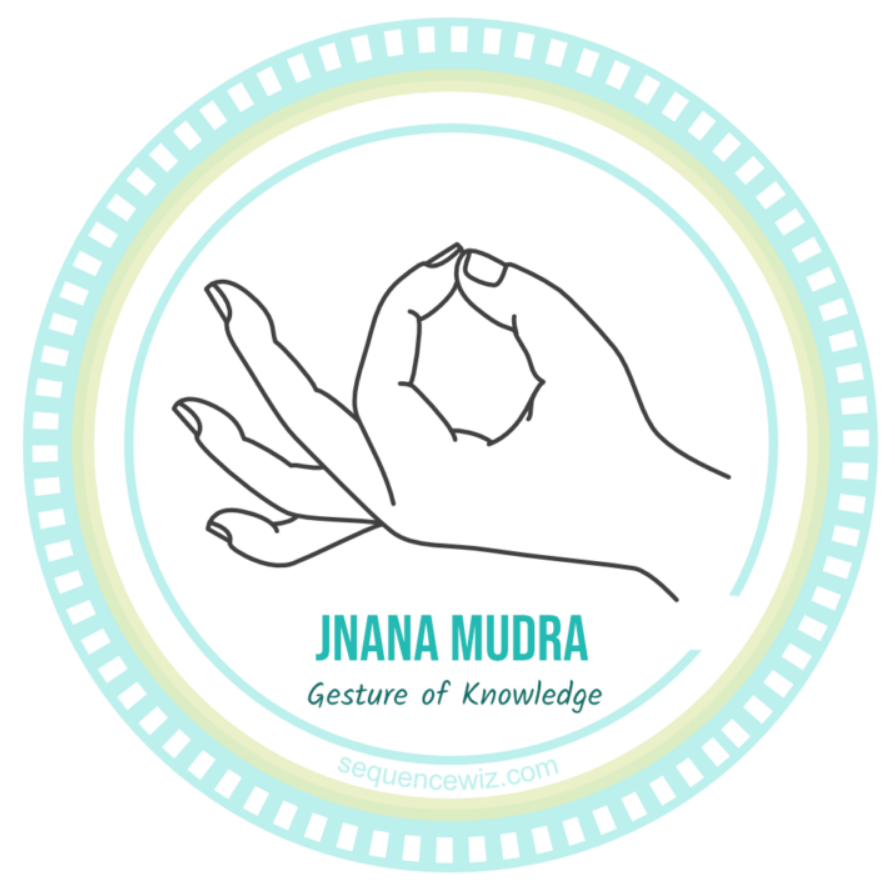 I’ve also been to practices where teachers included mudras with asana. For example, in one class we were invited to hold Jnana Mudra with one hand during Dancer Pose (Natarajasana). Adding Jnana Mudra in the Dancer pose won’t hurt anything, but the question is, what is the intention here?
I’ve also been to practices where teachers included mudras with asana. For example, in one class we were invited to hold Jnana Mudra with one hand during Dancer Pose (Natarajasana). Adding Jnana Mudra in the Dancer pose won’t hurt anything, but the question is, what is the intention here?
Dancer pose is already challenging enough for many students. It requires serious concentration to hold that pose. If you add a mudra to it, the question arises, where should your attention go? Should you focus on the action of balancing, on the action of backbending or on the mudra? If your attention keeps fluctuating between those points, it makes it harder to stay balanced and focused.
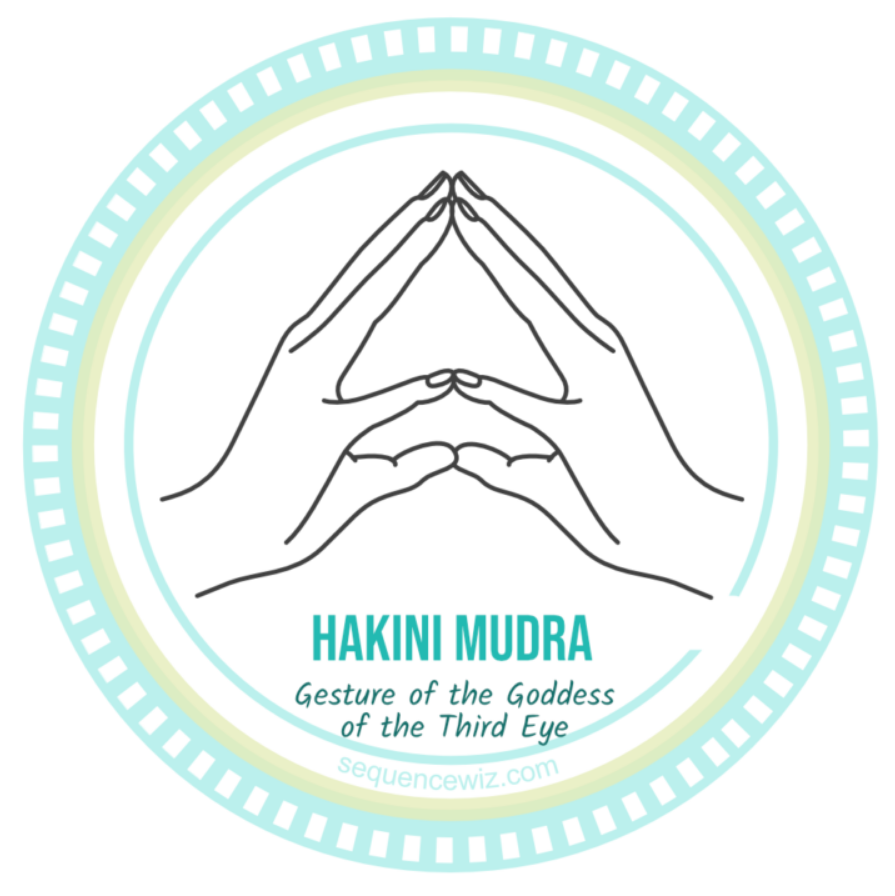 On the other hand, it can be really beneficial to use Haikini Mudra in Tree Pose (Vrksasana), for example. Haikini Mudra helps with concentration and improves coordination between the right and left brain hemispheres. Holding this mudra in Tree Pose, and gently pressing the fingers of your hands into each other can serve as a centering point and can actually help you balance in the pose. This is an example of mudra supporting the intention of the pose.
On the other hand, it can be really beneficial to use Haikini Mudra in Tree Pose (Vrksasana), for example. Haikini Mudra helps with concentration and improves coordination between the right and left brain hemispheres. Holding this mudra in Tree Pose, and gently pressing the fingers of your hands into each other can serve as a centering point and can actually help you balance in the pose. This is an example of mudra supporting the intention of the pose.
Whenever you decide whether or not to add mudras to yoga poses, the main question is always the same: would the mudra support or hinder the intention behind the pose?

Also, read...
Warrior I Pose: 5 Strengthening Variations
4 Easy Ways to Use a Sandbag in Yoga Practice
Exercise and Longevity: Diversify Your Yoga Practice for Maximum Benefits
Related courses
Breath as Medicine: Yogic Breathing for Vital Aging
Yoga and Myofascial Release: Releasing Chronic Tension with the Bodymind Ballwork Method

Educated as a school teacher, Olga Kabel has been teaching yoga for over 14 years. She completed multiple Yoga Teacher Training Programs but discovered the strongest connection to the Krishnamacharya/ T.K.V. Desikachar lineage. She had studied with Gary Kraftsow and American Viniyoga Institute (2004-2006) and received her Viniyoga Teacher diploma in July 2006, becoming an AVI-certified Yoga Therapist in April 2011. Olga is a founder and managing director of Sequence Wiz— a web-based yoga sequence builder that assists yoga teachers and yoga therapists in creating and organizing yoga practices. It also features simple, informational articles on how to sequence yoga practices for maximum effectiveness. Olga strongly believes in the healing power of this ancient discipline on every level: physical, psychological, and spiritual. She strives to make yoga practices accessible to students of any age, physical ability, and medical history, specializing in helping her students relieve muscle aches and pains, manage stress and anxiety, and develop mental focus.



